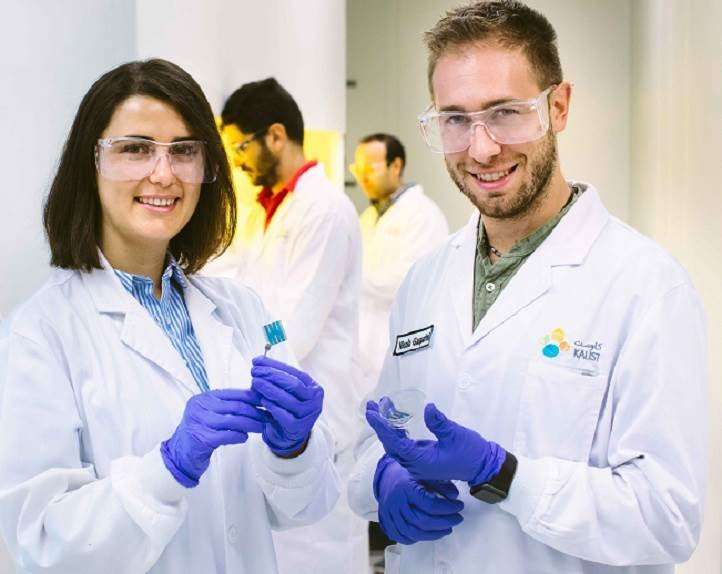Printable solar materials could soon turn many parts of a house into solar panels

New houses could soon deliver on a long-awaited promise and incorporate windows or roof tiles that harvest solar energy, research conducted at KAUST suggests.
Derya Baran, at the KAUST Solar Center, and her colleagues have developed a photovoltaic organic material that captures light efficiently and that potentially could be coated on building materials.
Traditional roof-mounted solar panels are made from slabs of silicon, but organic molecules can also capture energy from sunlight. These molecules could be formulated as inexpensive printable inks that are applied to regular building components such as windows. Turning sunlight into electricity is a multistep process, and the key to developing high-performance organic photovoltaic materials has been to find organic molecules that are good at every step, Baran explains.
When light strikes an organic photovoltaic material it knocks free an electron, leaving behind a positively charged hole. If the oppositely charged electron and hole recombine, the captured energy is lost. Thus, organic solar cells incorporate a mixture of electron donor and electron acceptor molecules to draw the charges apart.
"When I started my postgraduate studies in 2015, there was a lot of hype about fullerene buckyball derivatives as acceptors, and record efficiencies were around 10-11 percent with poor stabilities," Baran recalls. But fullerenes have several drawbacks—not least, relatively poor light absorption—so Baran has been investigating nonfullerene acceptors. "Now efficiencies up to 17 percent are being reported," she says. "I believe these acceptors will shape the future of organic photovoltaics."
The nonfullerene acceptor, known as EHIDTBR, assessed by Baran and her colleagues offers several advantages: The team showed that as well as strongly absorbing visible light, it mixed well with the electron donor component, which is important for long-term stability and performance.
EHIDTBR was also very efficient at dissociating excitons and preventing recombination—a property that should make for easy manufacturing, Baran says. In materials where recombination is high, the light-harvesting layer must be very thin so that the charges quickly reach the electrode layer, minimizing their chance to recombine. But these ultrathin layers are challenging to manufacture. "Thicker films are easier to print, particularly when they need to be scaled up for manufacturing," Baran says.
Scaling up the technology is the team's next step, Baran adds. "We have a spin-out company from KAUST Solar Center and through this company we want to make photovoltaic windows for electricity generation."
More information: Derya Baran et al. Robust nonfullerene solar cells approaching unity external quantum efficiency enabled by suppression of geminate recombination, Nature Communications (2018). DOI: 10.1038/s41467-018-04502-3
Journal information: Nature Communications





















